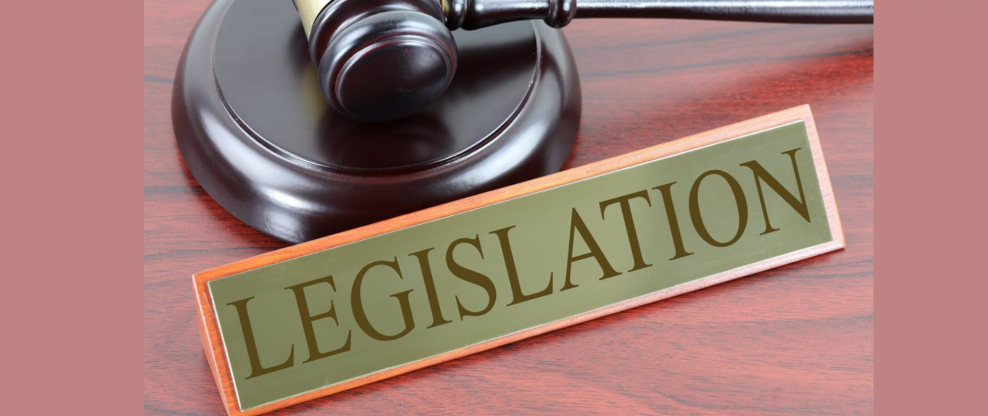
Legislative Liaison (Vacant) |  Legislative Co-Chair Brenda Brooks |
This area is provided to communicate state and local legislative issues, and to share our support for those running for office.
A MESSAGE FROM CHAIR CHARLOTTE A. BURROWS
U.S. Equal Employment Opportunity Commission sent this bulletin at 03/24/2021 10:29 AM EDT
 Washington, D.C. Headquarters A MESSAGE FROM CHAIR CHARLOTTE A. BURROWS ON EQUAL PAY DAY 2021 CONTACT: newsroom@eeoc.gov FOR IMMEDIATE RELEASE March 24, 2021 WASHINGTON — Today is Equal Pay Day, which marks how far into the year a woman must work, on average, to earn as much as a man earned the year before. Women make just 82 cents for every dollar paid to men, meaning that women had to work for nearly 15 months to earn what men did in 2020.[1] The pay gap is even worse for women of color, immigrant women and transgender women, reflecting the intersectional and compounding effects of gender, racial and ethnic bias. Unfortunately, the pandemic threatens to make these disparities even worse. It’s estimated that the gender pay gap could grow by 5 percent due to the pandemic alone, eliminating decades of economic progress for women. This sobering reality has significant, long-term consequences for all of us. Widening inequality, along fault lines of gender, race and class, undermines the strength and prosperity of our nation. It threatens our children’s futures. And it’s inconsistent with our most deeply held values about equality, fairness and justice. These differences in pay result from a variety of factors, but, unfortunately, workplace discrimination remains a significant part of the problem. Some of the pay gaps may be explained by differences in experience, occupation, industry and job title. But even when these factors are taken into account, there is still a significant unexplained gap in earnings among gender, racial and ethnic groups. The EEOC is working hard to address pay discrimination and other forms of discrimination that contribute to unjustified gaps in pay. Since 2013, the EEOC’s Strategic Enforcement Plan has made combating pay discrimination a top national priority for the agency.[2] In fiscal year 2020, the agency conducted more than 300 outreach events addressing pay discrimination, reaching more than 45,000 people. We also had significant success resolving pay discrimination claims, including securing injunctive relief to ensure that discriminatory pay practices are changed. To name a few:Last year, EEOC won a $200,000 judgment against Baltimore City and its Enoch Pratt Free Library for paying five female librarian supervisors lower wages than a male coworker with fewer years of service and less experience. In addition to correcting the pay gap and compensating the women for lost pay, the court ordered the city to adjust the female librarians’ retirement benefits to account for the unjustified pay differential.In February, the EEOC settled a pay discrimination case against Aimbridge Hospitality for $400,000. The EEOC’s investigation found that the hotel operator paid a male guest service representative $15.25 per hour while paying a female front desk supervisor and female guest service representatives $11 or less per hour. The settlement requires the company to provide back pay and other damages to the affected employees and to retain an economist to conduct periodic pay equity studies.And just last week, the EEOC settled a pay discrimination case against First Metropolitan Financial Services for $100,000. The EEOC’s investigation concluded that the consumer loan and finance company paid female branch managers less than male branch managers for the same work. In addition to monetary relief, the consent decree requires the company to create an equal pay policy and end its practice of asking about applicants’ prior earning history during the hiring process.Equal Pay Day is an annual reminder that EEOC’s work to combat pay discrimination is a crucial component of efforts to close the wage gap. As Chair of the Commission, I am committed to working within the agency, across the government and with our civil rights and industry partners to tackle this persistent and critically important issue. To paraphrase President John F. Kennedy’s statement on the signing of the Equal Pay Act more than 50 years ago, our actions must “affirm[] our determination that when women enter the labor force, they will find equality in their pay [checks].” The EEOC advances equal opportunity in the workplace by enforcing federal laws prohibiting employment discrimination. More information about Chair Burrows and Vice Chair Samuels is available on EEOC’s website at www.eeoc.gov. Stay connected with the latest EEOC news by subscribing to our email updates.[1] According to Bureau of Labor Statistics data, in 2020, women’s annual earnings were 82.3% of men’s,[2] See U.S. EQUAL EMPLOYMENT OPPORTUNITY COMMISSION STRATEGIC ENFORCEMENT PLAN FY 2013 – 2016 | U.S. Equal Employment Opportunity Commission (eeoc.gov) (last visited Mar. 22, 2021). ###www.eeoc.gov |
IABPFF DISCUSSION AREA
Loading the chat ...
